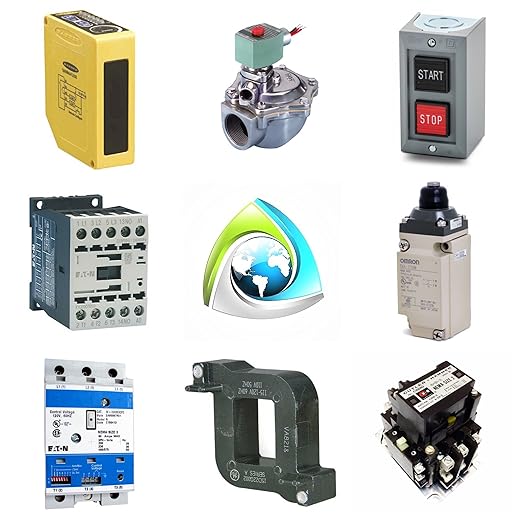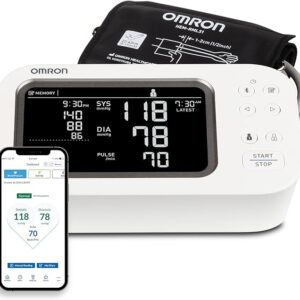Description
Here’s a detailed Pros and Cons Q&A for the Omron E3D-R3M4 Photoelectric Switch:
🔧 Product Overview:
- Model: Omron E3D-R3M4
- Type: Photoelectric Sensor – Retroreflective
- Detection Range: Typically up to 3 meters (depending on reflector used)
- Output Type: NPN or PNP (model-dependent, confirm via datasheet)
- Connection: Pre-wired or M8/M12 connector (M4 likely refers to M4 mounting, not connector type)
- Light Source: Infrared LED
- Operating Voltage: 10 to 30 VDC
- Output Mode: Light-ON/Dark-ON selectable (via wiring or switch)
✅ Pros:
- Simple and Reliable Retroreflective Sensing
- Uses a reflector to detect objects interrupting the beam. No need to mount a receiver, making installation easier and more compact.
- Mid-Range Sensing (Approx. 3 m)
- Suitable for general-purpose object detection at a medium distance—ideal for conveyors, packaging lines, and automated gates.
- Light-ON/Dark-ON Selectable
- Offers flexibility for different detection logic—detect presence (Light-ON) or absence (Dark-ON) of objects with a simple wiring change.
- Easy Installation and Alignment
- Retroreflective sensors are easier to align than through-beam sensors. Great for setups where exact positioning is difficult.
- Omron Build Quality and Reliability
- Built to withstand industrial conditions. Long operational life and high repeatability are hallmarks of the E3D series.
- Cost-Effective Sensing Solution
- Provides reliable performance at a relatively low cost compared to more complex sensors like laser or ultrasonic types.
❌ Cons:
- Requires Reflector
- You must mount a reflector on the opposite side. Not as simple as diffuse sensors, which don’t need anything beyond the sensor.
- False Triggers on Shiny Objects
- Reflective surfaces (e.g., metal or glossy packaging) can confuse the sensor by acting like the reflector, causing false readings unless polarization is used (if supported).
- Not Ideal for Transparent Objects
- Basic retroreflective models (like E3D-R3M4) struggle with clear or semi-transparent materials, which may not interrupt the beam effectively.
- Fixed Sensing Distance
- Unlike adjustable-range diffuse sensors, retroreflective models typically work within a narrow detection range window (depends on reflector and object properties).
- Limited Environmental Protection (check IP rating)
- May not be fully suitable for wet, dusty, or corrosive environments without additional protection (IP rating varies by model).
❓ Q&A – Common Use Cases and Considerations
Q1: What’s the advantage of retroreflective over diffuse sensors?
🔹 Retroreflective sensors offer more reliable detection over longer distances, and are less sensitive to object color and reflectivity, assuming the object is opaque.
Q2: Can I use it with transparent packaging?
🔹 No—basic retroreflective sensors like this model are not suitable for transparent or translucent objects. You’d need a retroreflective sensor with polarization or a specialized clear object sensor.
Q3: How do I select Light-ON or Dark-ON mode?
🔹 Typically selectable by wiring configuration or a physical switch. Consult the datasheet for exact method on the E3D-R3M4.
Q4: What type of output does it use?
🔹 Output is likely NPN or PNP open collector, depending on the specific variant. Double-check before ordering to match your control system.
Q5: How accurate is it in detecting small objects?
🔹 Retroreflective sensors are less accurate for very small objects unless paired with a narrow beam or high-precision reflector. Consider through-beam for tiny targets.
🧩 Ideal Applications:
- Conveyor object detection
- Presence/absence checking
- Industrial automation lines
- Packaging equipment
- Simple gate or door control systems
✅ Summary:
The Omron E3D-R3M4 is a durable, mid-range retroreflective photoelectric switch that provides reliable object detection up to 3 meters with a reflector. It’s well-suited for general automation, material handling, and packaging lines where space is limited but dependable detection is needed.
However, it’s not ideal for transparent/shiny objects, or environments with heavy contaminants, and requires a reflector. For such cases, a polarized or diffuse-type sensor might be more appropriate.




Reviews
There are no reviews yet.